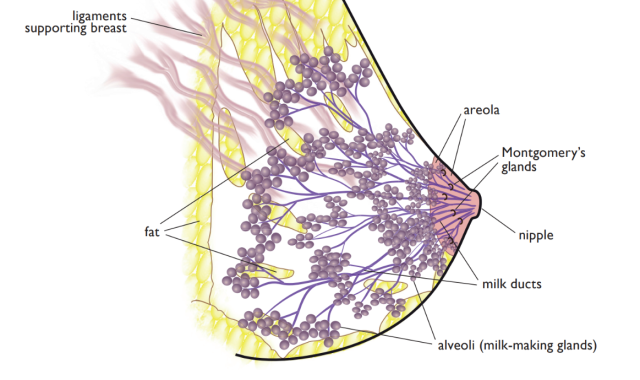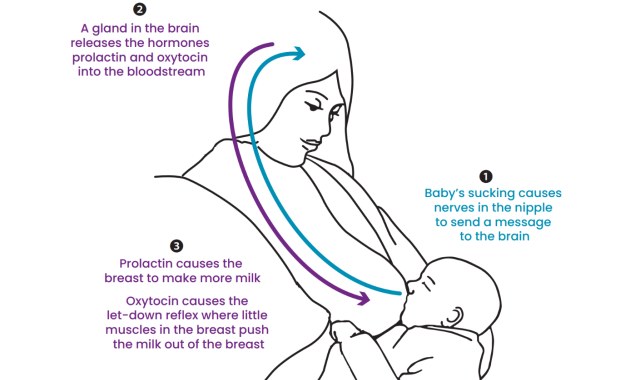Understanding how breastfeeding works can help you feed your baby.

Your breasts contain fatty tissue, supportive tissue and milk-making glandular tissue. Milk is made in the glandular tissue in clusters of alveoli, which look a bit like tiny bunches of grapes.
Milk ducts carry the milk from the alveoli to the nipple where the milk flows out from tiny openings.
Milk making is all about hormones
During your pregnancy, hormones have been preparing your breasts to make milk.
After your baby is born and the placenta is delivered, pregnancy hormones drop, allowing the breastfeeding hormones to start working.

When your baby sucks at your breast, these hormones are released into your bloodstream.
Prolactin acts on the milk-making tissue, building up your milk supply.
Oxytocin causes the breast to push out or release the milk already there. This release of milk is known as the let-down reflex or the milk ejection reflex.

Recognising your let-down reflex
There are signs that show your let-down has occurred:
You might have a tingling or sudden full feeling, which can be quite strong, even painful sometimes
Milk might leak from the other breast (let-down happens on both sides at the same time)
You might feel your uterus contract especially if this is not your first baby.
Some mums don’t notice any of these. But a sure sign that you've had a let-down is a change in your baby’s sucking pattern from a quick suck-suck to a rhythmic suck-swallow pattern as the milk begins to flow and your baby starts to suck deeply.
So even if you don’t have any of the signs above, look for the change in your baby’s sucking.
Often, the let-down is more noticeable in the early days or weeks, but later you may find that you don’t notice it so much. If your let-down reflex is slow to happen, there are things you can do to help.
Chapter 2 of our Breastfeeding Basics video series explains more about how breasts make milk and how babies feed.
© Australian Breastfeeding Association April 2022
Need to know more about breastfeeding?
Online interactive session free for Virtual Village members
Newborn Virtual Village - Supply

Evidence-led info and practical tips from our Breastfeeding Information Series
Breastfeeding: an introduction



